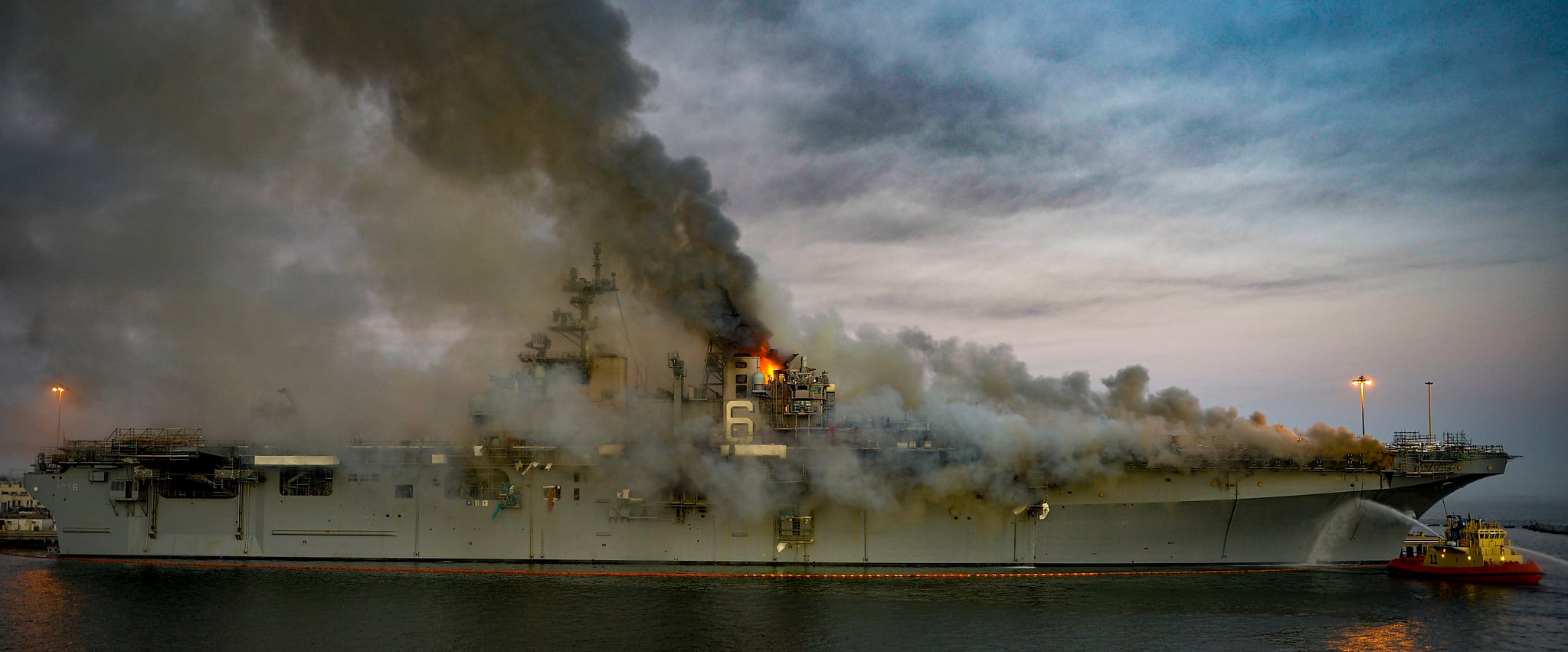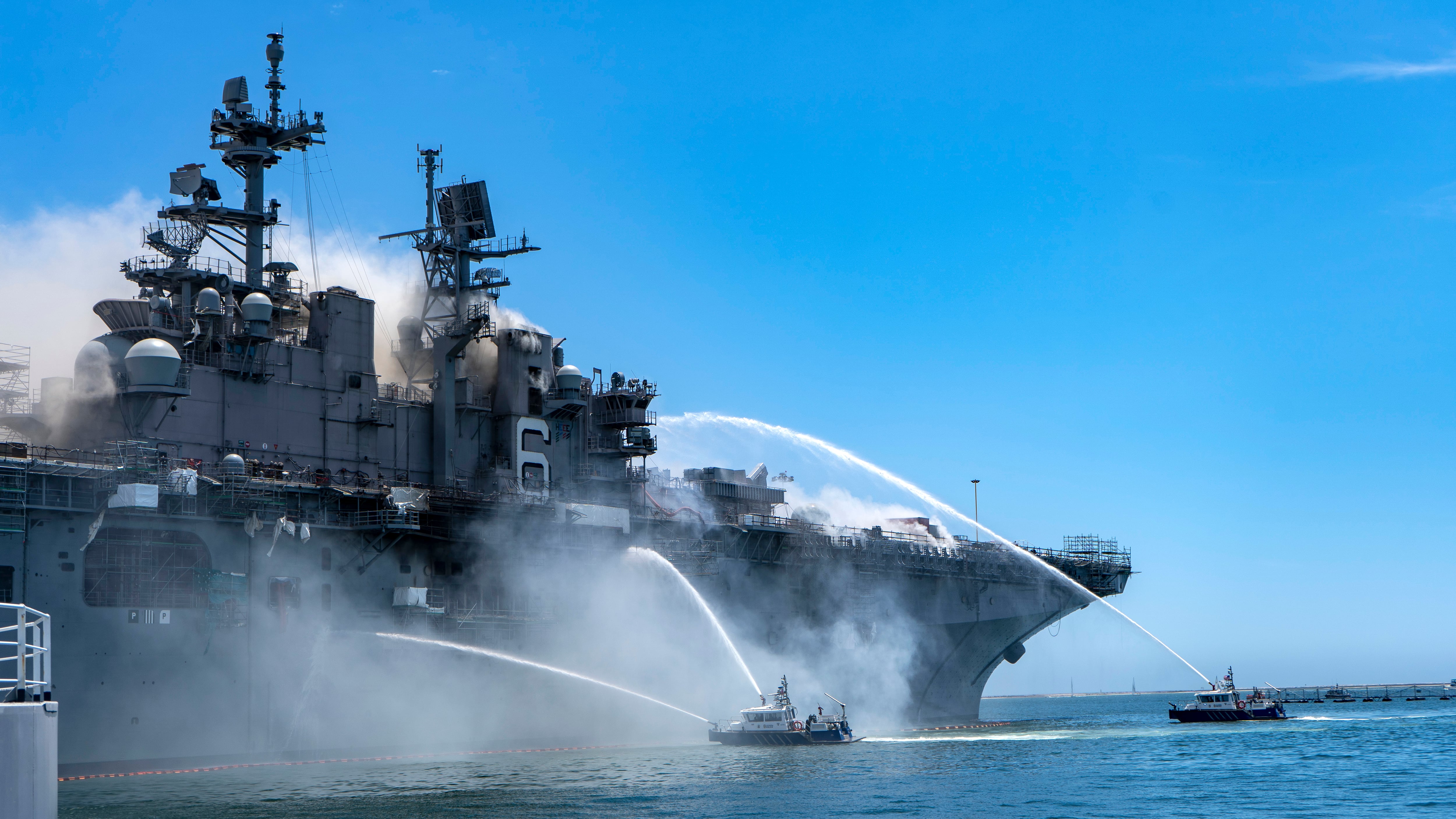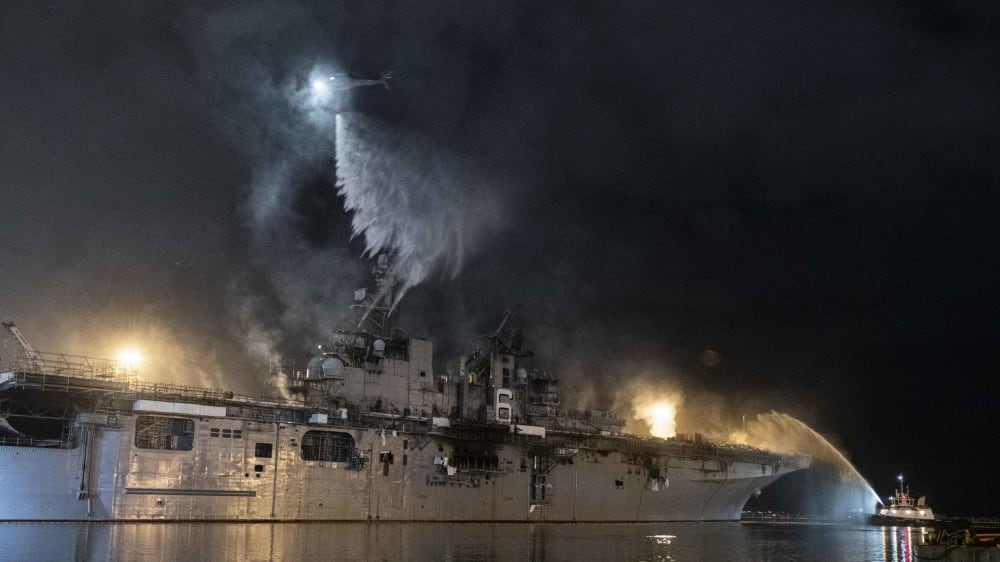The amphibious assault ship Bonhomme Richard, destroyed by a massive fire in July, will be decommissioned this week and is expected to head to Texas afterward for dismantling, according to the Navy.
The Bonhomme Richard burned for four days, leaving major damage to the flattop’s flight deck, island, mast and lower levels.
Rear Adm. Eric Ver Hage, commander of the Navy Regional Maintenance Center, told reporters in November approximately 60 percent of the ship would need to be replaced to get it back in operations and overhauling the ship would cost between $2.5 billion and $3.2 billion over the course of five to seven years.
In comparison, Hage estimated that it would only cost around $30 million to dismantle the ship, which will take between nine months and a year.
RELATED

A decommissioning ceremony for the Bonhomme Richard is slated for April 14 in San Diego for a limited number of invitees due to the COVID-19 pandemic, and the vessel will officially be decommissioned on April 15.
Cmdr. Nicole Schwegman, a Naval Surface Forces spokeswoman, told Navy Times that most of the crew from the ship have been informed of their reassignments and have subsequently transferred to their new duty stations.
“A small contingent of crewmembers will stay onboard USS Bonhomme Richard until the ship is officially decommissioned,” Schwegman said in an email to Navy Times.
RELATED

The ship will likely be transported to Texas for dismantling, but the Navy is on the precipice of awarding a contract and so the location is not yet confirmed, Schwegman said.
The San Diego Union-Tribune was the first to report when the ship would be decommissioned and that it would likely head to Texas.
The Navy announced in February that the Bonhamme Richard would be dismantled starting in April, along with coastal patrol ships Zephyr and Shamal in 2021.
At the time of the fire, the Bonhomme Richard had undergone $250 million worth of upgrades over the course of 18 months in order to support integration of the F-35B joint strike fighter. The ship was one of four large-deck amphibs that was updated.
“It was a pretty substantial investment,” Ver Hage said. “Clearly a loss.”
Navy Times reporter Geoff Ziezulewicz contributed to this report.




